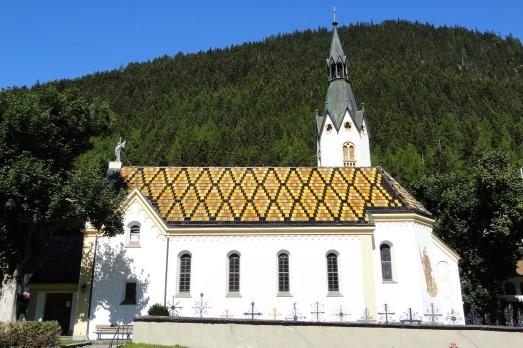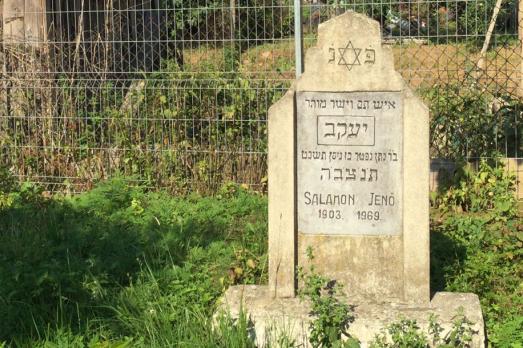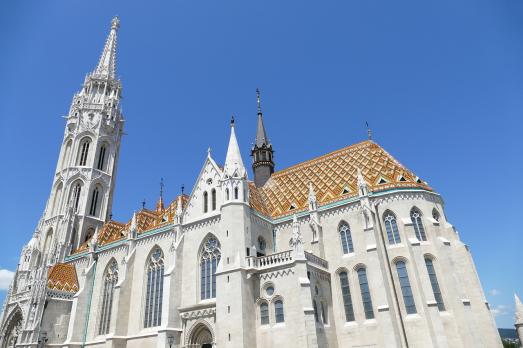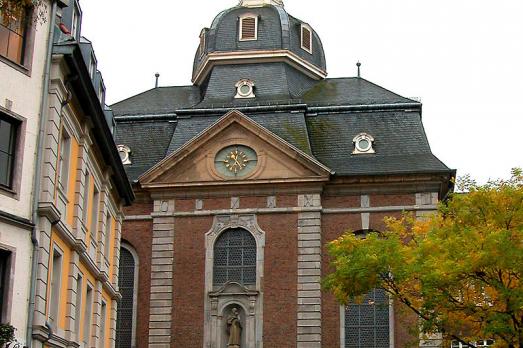
Mathiatis Mosque
Mathiatis, CY
The mosque is located in the middle of the old village centre. It is unknown when the mosque was built. Bağişkan assumes that the building dates from the Ottoman period. Extensive renovation work took place in 1882.
Here you can search for a building to visit. You can use the map find destinations, or you can use the filters to search for a building based upon what different criteria.

Mathiatis, CY
The mosque is located in the middle of the old village centre. It is unknown when the mosque was built. Bağişkan assumes that the building dates from the Ottoman period. Extensive renovation work took place in 1882.

Ishgl, AT
The Mathon Expositurkirche was built between 1674 and 1682 and enlarged in 1763. The church was renovated in 1881 and consecrated in 1894. The neo-Romanesque style of the church dates from this renovation.

Matiyovo, UA
The exact period of the cemetery’s establishment is unknown, but according to the dates on the preserved gravestones, it can be assumed that the cemetery emerged in the early 19th century. The cemetery was fenced.
Breda, NL
In Breda-Noord there is currently one Roman Catholic church in use: the Sint-Franciscuskerk (1968, S. Steeneken). On 1 January 1994, the St. Franciscus parish, together with the parishes of Christus Koning, Heilig Kruis, Goede Herder and Menswording, became the Breda-Noord parish with one church council. Three of the churches involved in this merger have since been demolished: the Heilig Kruiskerk (closed 01-12-1999, demolished June 2000), the Goede Herderkerk (closed 1983, then a sports hall, demolished April 2003), the Christus Koningkerk (closed 27-11-1999, demolished March 2003). The Menswordingkerk from 1983 has been in use by the CGK since 2001 and has since been called the Mattheuskerk.

Budapest, HU
The Matthias Church was founded in the 13th century after the Tartar invasion (1255-1269). Extended in the 14th century in a Gothic church-hall, it was equipped with a bell tower and an oratory in the 15th century. Partly destroyed and transformed into a mosque during the Turkish occupation (1541-1699), it was later occupied by monastic orders which restored it in a Baroque style. A complete restoration carried out in 1873-1896 gave the church its current neo-Gothic style.

Mauerbach, AT
The Mauerbach Charterhouse is a former Carthusian monastery in the Austrian town of Mauerbach, on the outskirts of Vienna. The monastery's premises now house the restoration workshops of the Austrian Federal Office for Monuments.
Mauriac, FR
The monastery church, built at the end of the 10th century, was destroyed in 1826 and the materials were used for the construction of the town hall. All the monastic buildings, of which only vestiges remain in constructions built after the Revolution, date back to the 11th and 12th centuries, with the exception of the cloister built in the 14th century to replace that of the 12th century.
IJlst, NL
Before the construction of the current church, there was a cow market on the site. In 1830, the Reformed Church was built here. This was expanded in 1868 with a transept. The church replaced the dilapidated St. Mauritius Church that belonged to the St. Mary's Monastery of the Carmelites. That church and the monastery were probably built in the 14th century and stood on the current cemetery on the Galamagracht in IJlst. The 16th century pulpit with baptismal fence, the board with the collection bags and the Bader pipework of the original organ were transferred from that church to the current Mauritius Church at the time.
IJzendijke, NL
The beautiful octagonal church in IJzendijke was built in the years 1612-1614 by order of Prince Maurits. He did this for the men of his army. After the church of Willemstad, it was the second church in the Netherlands that was built especially for Protestant worship. In the years that followed, the size of the garrison became so large that the States General gave permission for the expansion of the church. Between 1656 and 1659, the three western walls were demolished and by extending the north and south walls, an elongated octagonal church was created. In the 19th century, a consistory was added. The slate-covered church was crowned with a small tower. An onion-shaped ball with a cross and a gilded weather vane are mounted on the tower. A bell and a carillon hang in the tower. A Ten Commandments board from 1620 with the coat of arms of Orange hangs in the church. Furthermore, a board with Bible texts from the same year. And finally, a board from 1623, commemorating a futile attempt by the Spanish to conquer the fortress. The organ, installed in 1872, was built by GFC Witte, affiliated with the Bätz company from Utrecht.

Düsseldorf, DE
The St. Maximilian Catholic Church or Max Church is a late 18th century Baroque church. Former Franciscan monastery, it became a parish church after the abolition of the monastery in 1804.

new
The Chassidic Route is a cultural and historical trail tracing the rich legacy of Jewish communities in southeastern Poland and western Ukraine. This region was central to the rise of Chassidism in the 18th century. Here, we highlight 10 remarkable synagogues you’ll discover along this route.

he cradle of the Industrial Revolution in Germany, Chemnitz, is well-known for its industrial heritage landscape, but the city is also home to remarkable examples of religious architecture from different historical periods. Join us as we explore the key landmarks of this European Capital of Culture 2025.

The twin towns of Nova Gorica (Slovenia) and Gorizia (Italy), lying on the border between the two countries, have a rich religious heritage, steeped in centuries of tradition. If you are looking for ideas for your visit, take note of these 10 religious sites that you should not miss.